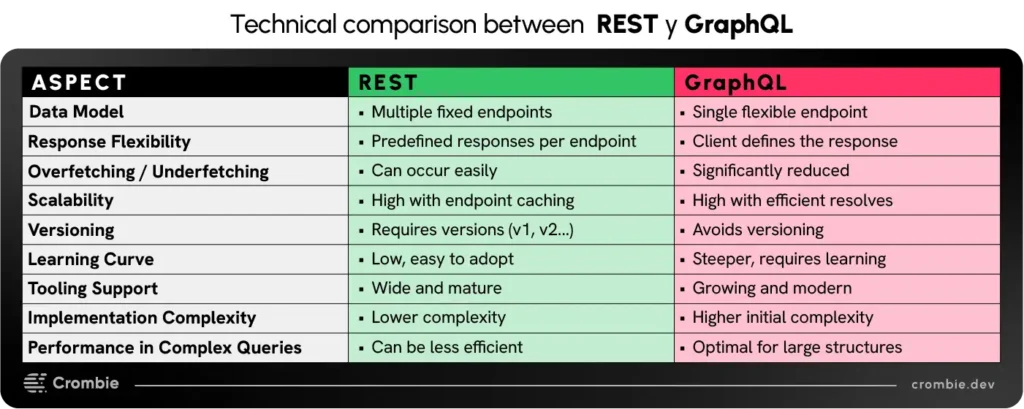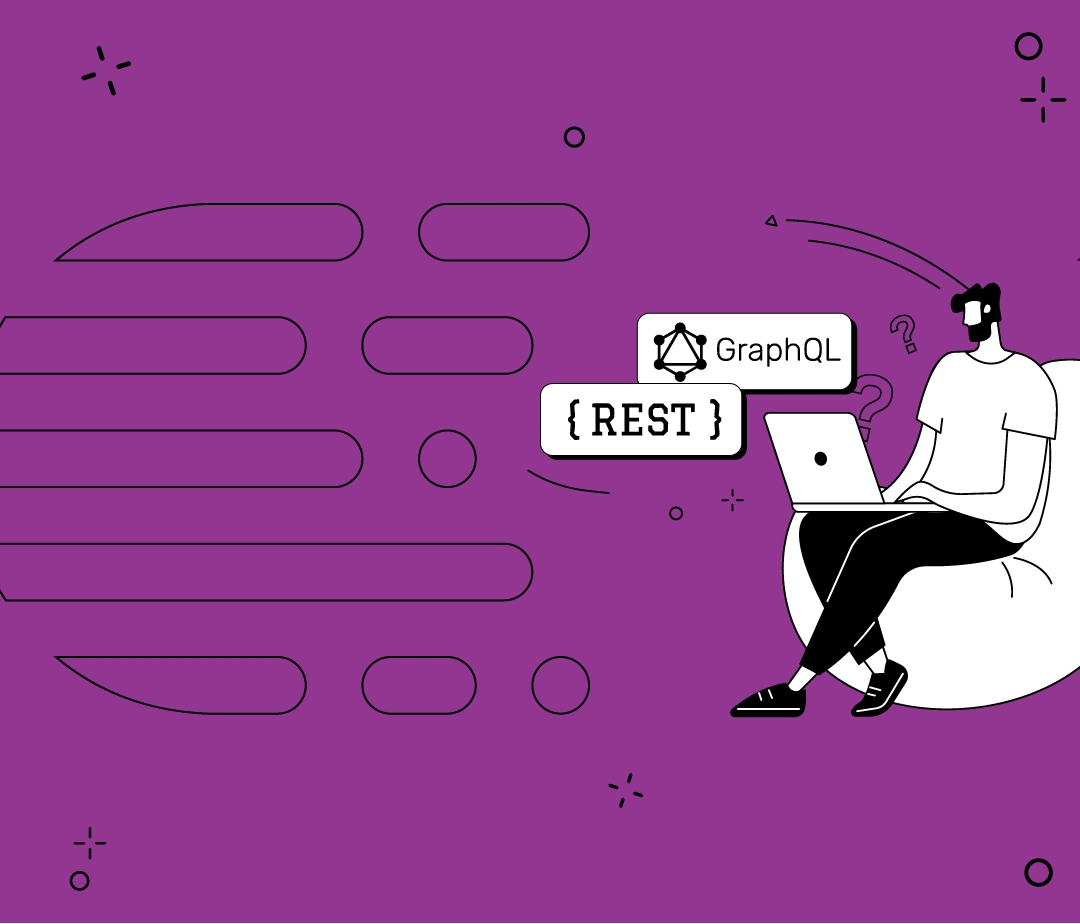When it comes to integrating systems, choosing between GraphQL and REST can determine the success of your digital solution. Both architectures are widely used in software development, offering different approaches to structuring and querying data via APIs.
This article explores their differences, use cases, and technical criteria to help you make informed decisions.
GraphQL vs REST: technical differences
1. Query model
- GraphQL allows clients to define exactly what data they need. This reduces overfetching and underfetching.
- REST delivers complete resources through fixed endpoints, which can increase the amount of unnecessary data.
2. Endpoint structure and maintenance
- GraphQL: operates with a single, flexible endpoint that simplifies backend evolution without breaking compatibility.
- REST: requires multiple endpoints for each resource or action. This can make versioning and maintenance more difficult.
Read more → Benefits and keys of TypeScript: the perfect ally for scalable, quality software
3. Performance and efficiency
- GraphQL: reduces the number of server calls and improves the experience on devices with limited connectivity.
- REST: may require multiple requests to assemble a complete view, increasing latency.
4. Validation and typing
- GraphQL defines a strongly typed schema that enables data validation and automatic documentation generation.
- REST: relies on conventions (e.g., OpenAPI), but does not guarantee type-level consistency.
5. Development flexibility
- GraphQL: allows developers to iterate faster by decoupling the frontend from the backend.
- REST: imposes a more rigid structure, which may limit rapid iteration without server-side changes.

GraphQL vs REST: use cases
When to choose GraphQL?
- When building products with rich interfaces and highly customized data needs, such as marketplaces, mobile apps, or B2B platforms.
- When working with multiple clients, aim to decouple the frontend from the backend.
- When you need to evolve quickly without breaking existing API contracts.
When to choose REST?
- When working with legacy systems that already implement REST and have solid documentation.
- When HTTP standardization and compatibility with caching systems like CDNs are required.
- When developing public APIs that require a predictable and easy-to-integrate structure.
Suscribe to our newsletter!
Security and monitoring
From a security perspective, REST relies on widely adopted mechanisms such as per-endpoint rate limiting and proxy-level caching, making it easier to integrate and manage in traditional environments.
GraphQL, due to its dynamic structure, requires additional validation to prevent vulnerabilities such as malicious introspection, overly deep queries (Deep Query Attacks), or denial-of-service (DoS) attacks.
Additionally, monitoring in GraphQL can be more complex, as multiple distinct queries are routed through a single endpoint, requiring specialized tools for tracking and analysis.
Performance and scalability in large environments
In distributed architectures, GraphQL can become a bottleneck if the resolver layer is not properly optimized. Therefore, it is recommended to:
- Implement data loaders to avoid N+1 query problems.
- Use persisted queries to reduce payload size.
- Decouple services using GraphQL Federation or an API Gateway.
On the other hand, REST allows for more straightforward horizontal scaling by segmenting endpoints and services.
Which architecture fits your product profile?

- Dynamic and highly customized products: GraphQL is ideal when flexibility, efficient data consumption, and scalability across multiple devices or clients are required.
- Products with high external traffic and a focus on performance: REST is more convenient when you need a predictable structure, easy caching, and broad compatibility with standard tools.
In summary, both REST and GraphQL can power your architecture, but there is no one-size-fits-all answer. The key is to assess the complexity of your integrations, your system’s scalability, and the user experience you want to deliver.
Choosing the right technology from the start eliminates friction, reduces costs, and prevents bottlenecks.
At Crombie, we help our partners design scalable solutions. We integrate complex systems with a modern, robust, and business-focused architecture. Whether it’s REST, GraphQL, or a hybrid approach, we guide you to make decisions that align with your strategic goals.
Looking to optimize your integrations and take your architecture to the next level?

FAQs about GraphQL vs Rest
GraphQL is used to build flexible APIs that allow clients to specify exactly what data they need in a single request.
REST is used to design simple, standardized APIs where resources are accessed through HTTP methods and URIs.













Leave a Comment